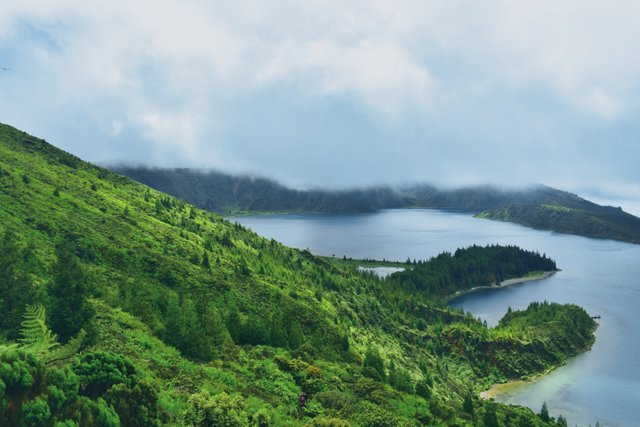📷Curiosities about the Azores Archipelago
Italy Community
✅ 1942 | The End of the Avila Star Liner and the Rescue of Its Castaways
During the nearly six years of hostilities in World War II, the waters around the Azores were often the stage for actions by German submarines, due to their strategic location near the North Atlantic shipping lanes.
Although Portugal’s neutrality spared its ships from attacks by the German U-boat fleet, several submarine actions near the Azores are documented—especially those involving the Portuguese rescue of castaways, such as the incident involving the British liner SS Avila Star, torpedoed on July 5, 1942.
The SS Avila Star
The Avila Star was a British passenger liner of the Blue Star Line, founded in Liverpool in 1911. Part of a group known as the "Luxury Five", the ship was 168 meters long. On June 12, 1942, it departed Buenos Aires with:
- 166 crew members
- 30 British passengers, many enlisting in the Allied war effort
- 5,659 tons of refrigerated meat
The ship, commanded by Captain John Fisher, made a stop in Freetown, Sierra Leone, and departed from there on June 28, heading to Liverpool.
As it sailed without escort, several safety measures were implemented:
- Zigzag navigation
- Blackout lighting at night
- Frequent lifeboat drills
- Distribution of life jackets
The Attack by U-201
In the early hours of July 5, about 90 miles east of São Miguel Island, the Avila Star was sailing under calm seas and a clear sky when it was struck by a torpedo from German U-boat U-201, commanded by Adalbert Schnee.
The evacuation began immediately
The crew and passengers moved to their assigned stations, and eight lifeboats were lowered. However, not everything went smoothly:
- Lifeboat No. 5 was dropped unevenly, causing several people to fall into the sea.
- Lifeboat No. 7 was caught by a second torpedo’s shockwave, throwing its occupants into the air.
- A third torpedo struck, sinking the Avila Star in about twenty minutes.
Life at Sea: The Fight for Survival
With the sea still calm, the survivors regrouped in the lifeboats. They inventoried:
- The number of survivors
- Provisions available
- The seaworthiness of each lifeboat
Lifeboats No. 3 and 7 were found to be taking on water. Survivors were redistributed among:
Lifeboats 1, 2, 4, 6, and 8
Lifeboats 2 and 6 set course east, toward the Iberian Peninsula.
Lifeboats 1, 4, and 8 remained together, hoping for rescue.
July 8: A Glimmer of Hope
On the evening of July 8, lifeboat No. 8, the only one with a motor, decided to move away from the others for one hour to search for help.
“Luck smiled upon them: after an hour, the occupants thought they saw a light from a ship.”
They lit flares and signaled with lanterns.
It was indeed a ship: the Portuguese destroyer NRP Lima, commanded by Lieutenant Commander Manuel Maria Sarmento Rodrigues, en route from Lisbon to Ponta Delgada.
Rescue Begins
The NRP Lima rescued the castaways from lifeboat No. 8. Based on their information, the ship began searching within a 30-mile radius and located:
- Lifeboats No. 1 and 4
- All survivors were rescued
Total rescued by NRP Lima: 110 people
With limited fuel, NRP Lima sailed to Ponta Delgada, where survivors were disembarked.
Some of the rescued were “double castaways”—previous survivors of the SS Lylepark, torpedoed on June 11, who were aboard Avila Star for their return journey.
Continued Search by Air and Sea
Based on reports from the NRP Lima, Portuguese Naval Aviation launched an aerial search with aircraft from Bom Sucesso (Lisbon) and Ponta Delgada.
“On July 22, from one of the lifeboats, a plane engine was heard. Everyone looked up. It was a Portuguese twin-engine aircraft.”
Water, biscuits, and life jackets were dropped. Meanwhile, in Lisbon, the second-class aviso NRP Pedro Nunes was dispatched.
July 25: Final Lifeboat Found
The Pedro Nunes found lifeboat No. 2, which had originally carried 39 people, but only 28 survived.
- Survivors were transported to Lisbon
- Lifeboat No. 6 was never found
“The torpedoing of the Avila Star occurred on July 5. For nearly three weeks, those poor souls drifted at the mercy of the sea!”
“The women and some men in the lifeboat rescued by the Pedro Nunes were kept alive by the courage of the strongest among them.”
— Diário de Lisboa, July 26, 1942
Final Numbers and Recognition
- Total people aboard SS Avila Star: 196
- Total survivors: 138
- 110 rescued by NRP Lima (in Ponta Delgada)
- 28 rescued by NRP Pedro Nunes (in Lisbon)
- Total dead or missing: 58
- Including Captain John Fisher
On July 28, the British Ambassador in Portugal officially thanked the Portuguese Navy and Naval Aviation on behalf of the British government:
“For the efforts made by our Navy and Naval Aviation to save the survivors of the Avila Star.”
| Category | #italy |
| Photo taken at | São Miguel Island - Azores |
)


Upvoted! Thank you for supporting witness @jswit.